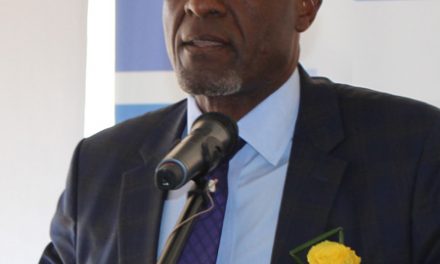
The case for renewable energy confirmed
REEE-powering Namibia is about energising national development by capitalising on local advantages and strengths, such as the country’s renewable resource endowments. REEE-powering Namibia’s domestic, commercial, industrial and utility landscape would allow each of these energy sector actors to become an active driver of the national development engine.
A new book on alternative energy by renowned local energy specialist, Dr Detlof von Oertzen was released earlier this month by the Konrad Adenauer Foundation.
The Konrad Adenauer Resident Representative, Dr Bernd Althusmann, launched the book titled “REEE-powering Namibia – energising national development”. It is meant as a practical and timely follow-up on a previous study, “Namibia’s Energy Future – A Case for Renewables” which was published by the Konrad Adenauer Foundation in 2012.
REEE-powering Namibia illustrates how development can benefit through the deliberate use of renewable energy, energy storage and energy efficient technologies. Its departure point is the realisation that rapid advances in the fields of renewable energy, energy storage and energy efficiency are taking place, which have far-reaching impacts and implications for Namibia’s development in general, and the country’s electricity industry in particular.
The use of renewable energies, and the uptake of energy storage and energy efficiency opportunities create local value in the social, economic and environmental spheres. The choice for or against REEE-powering is therefore also a choice for local value creation, and against the continued export of value and opportunities.
REEE-powering is, first and foremost, a decision in favour of using clean, sustainable and locally abundant renewable energy resources, as well as the application of energy storage and energy efficient technologies, to reduce electricity consumption. Large-scale REEE-powering can be readily achieved today, and in many cases, the cost associated with such a transition is quickly recovered through savings. The book uses more than 20 case studies to illustrate both qualitatively and quantitatively how and under what conditions REEE-powering can be achieved in Namibia, and discusses their development and local value creation potentials.
REEE-powering also addresses important strategic considerations, such as the enhancement of the security of supply of energy, reducing the country’s vulnerability to foreign exchange dependency and the whims of foreign exchange fluctuations, and enhancing the country’s resilience against the impacts of climate change by strengthening the local economy.
Dr Althusmann said “Namibia’s present day energy supply system delivers a variety of energy products to the market, including liquid fuels, electricity, coal and others. However, the energy sector can be much more than a mere set of supply arrangements. Indeed, the sector can become a development engine, the locomotive for local value creation. But the machinery to realise such a vision must first be created. It requires new perspectives on: how the more than half of all Namibians that remain without access to modern energy can effectively be included in the country’s economy; how commercial and industrial actors can be weaned off their dependence on fossil fuels and imported electricity; and how electricity distributors, independent power producers and the national electricity utility can more deliberately benefit from recent REEE technology developments and begin to actively drive national development efforts. These are ambitious goals and cannot all be achieved in an instant. But a step-by-step approach will bring progress.”











































